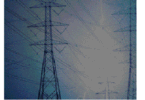Adapting to a changing grid
by Alex Apostolov, Editor-in-Chief

As electric power systems evolve to accommodate growing penetration of inverter-based resources (IBR), increased automation and requirements for reliability, traditional protection approaches are no longer sufficient. One of the most crucial tools available to support this transformation is the System Integrity Protection Scheme (SIPS).
A System Integrity Protection Scheme is a specially designed protection and control system that monitors key system parameters across a wide geographic area. It is engineered to respond to disturbances that could jeopardize the overall integrity of the power system-such as extreme line overloads, generator trips, or sudden power imbalances.
Unlike conventional relays that act locally and independently, SIPS operates with a system-wide perspective. It uses real-time data from phasor measurement units (PMUs), SCADA, and digital substations to make intelligent, coordinated decisions. These decisions can include actions like controlled load shedding, generator tripping, or switching of transmission lines, all executed quickly to prevent cascading failures and system-wide disturbances.
The importance of SIPS has grown significantly in today’s changing grid. Traditional power systems were largely centralized, with predictable, high-inertia synchronous generators. Today, the grid is being reshaped by IBRs such as solar, wind, and battery energy storage, which are often distributed and variable.
These resources typically provide less inertia and may behave differently during faults, making the system more sensitive to disturbances. The decrease in system inertia means that frequency and voltage can deviate more quickly, giving operators less time to react.
This is where SIPS becomes critical. By acting faster than human operators and traditional control systems, SIPS helps maintain grid stability during high-impact, low-frequency events. For example, in systems with high penetration of renewables, a sudden drop in generation due to cloud cover or wind loss can cause frequency to fall rapidly. A well-designed SIPS can immediately shed non-critical loads or bring fast-ramping resources online to control the frequency decline and avoid a blackout.
SIPS also plays a key role in maintaining operational flexibility. As utilities move toward grid modernization, the ability to safely run the system closer to its limits is increasingly important. SIPS allows for higher power transfers across critical corridors, reducing the need for expensive infrastructure upgrades. It also supports the integration of large-scale renewables in weak grid areas, where local disturbances can have wider effects.
Looking ahead, the functionality of SIPS is likely to grow through integration with advanced digital technologies. With the support of standards like IEC 61850 and the use of AI and machine learning, future SIPS may evolve into adaptive systems that can reconfigure their logic based on changing grid conditions. This will be essential as grid dynamics become less predictable.
Another related tool to support SIPS evolution is R-GOOSE (Routable GOOSE) – an extension of the IEC 61850 Generic Object-Oriented Substation Event (GOOSE) protocol that enables communication beyond the local substation over IP networks, including wide-area networks (WANs). This capability is essential for implementing wide-area protection schemes like SIPS which require fast, coordinated actions across geographically dispersed locations.
Traditional GOOSE operates only within a local substation LAN. R-GOOSE, by contrast, uses routable IP protocols, enabling SIPS to send time-critical messages (like trip or shed commands) across substations, regional control centers, or even between utilities. This allows real-time data exchange and decision-making necessary for detecting wide-area disturbances and initiating corrective actions.
By integrating R-GOOSE with synchrophasor data, digital substations, and intelligent algorithms, SIPS becomes more effective and responsive. It enhances grid reliability by enabling distributed protection devices to work together, preventing blackouts and ensuring faster recovery from system-wide events.
R-GOOSE also enhances situational awareness by enabling the real-time exchange of critical status and event data across substations and control centers. This allows operators and automation systems to maintain a consistent, up-to-date understanding of grid conditions over large areas.
Through its routable nature, R-GOOSE enables the distribution of synchrophasor-based measurements, breaker statuses, and protection system responses. This rich data stream supports the predictive capabilities of SIPS, allowing it to act not only on detected faults but also on evolving instability trends. The result is a smarter, more adaptive grid with faster, more coordinated protection decisions.
“The measure of intelligence is the ability to change.”
Albert Einstein








